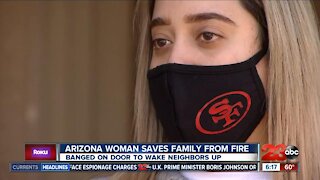Premium Only Content

5 Things to Know When Jumping from Single Family to Multifamily
Here is a question that comes up in conversation: How to make the jump from single family to multifamily. As subtle as the differences look, the contrast between single and multifamily properties can be big. If you are looking to take down a 5 unit or greater, the additional units under the same roof will impact the financial terms, time to close, budgets and many other items related to the property. Sometimes getting into the deal can be easy, but at times it can be frustrating. It just depends on the personalities involved and how committed you are to be easy to deal with. Despite all this, the process is generally the same - whether it be 10 or 100 units. Investing in multifamily may seem intimidating, but if you learn and partner with experienced people, it doesn’t have to be. Before you decide to take down your first $10MM property, I've outlined the 5 biggest differences that you need to know:
1. The Numbers - The biggest difference in single and multifamily properties is with the numbers. On a single-family home rental property, you look at projected rents and maybe lean on the neighborhood to tell you if you have a good deal. In a multifamily deal, you will look at this info and much more. And the bigger the deal in terms of units, the more data you need to rely on. You will be looking at the T12 (or Trailing 12), rent rolls, maintenance costs, net operating income, vacancy drivers and other material info. Not only do you need to know what all this means, but you also need to account for every dollar. When you are starting out, trying to decipher the terms and numbers can be confusing. But if you analyze enough deals and are diligent, it will become second nature.
2. More Docs - It may make sense that a 50-unit building will require more due diligence than a single-family home. Along with the number of units, there will be more paperwork and degree of order required. You will want to review all the leases and look for “heads on beds”. Meaning, is the seller just placing anyone in the units to drive occupancy up? You need to look at rent rolls to see where the rents are to market and if there are any dips in occupancy. You will want to look at major repairs that were made and what warranties are in place on such items as the boiler, roof and water heater. Anyway, just understand it will sometime take time to get your hands on all the paperwork not only for your own review but for the bank as well. In addition to all that, the lender will want to look at the deal appraises. Unlike single-family homes that are appraised on comps and listings, a multifamily property is appraised by how much cash they generate because it is a business. In order to put both the buyer and seller at ease, putting these deals together takes more time. All this means is that it will take more time to close. The good thing here is that the bank is your partner. If the documents you are sending do not make sense to the bank and they don’t like it, it means you shouldn’t buy it.
3. More Capital - This is the part that many people get hung up on. But here’s the thing: if the deal makes sense, the money will come. So, there are a few ways to look at expenses in a multifamily deal: If you own a smaller deal, all the expenses are under one roof. If you need a need roof, dryer or furnace, you typically need one for all the units. When you looking at bigger multifamily deals, you need to make sure you have reserves to handle the unexpected. One big mistake that new multifamily investors make is not setting aside enough capital to renovate or cover incidentals. For example, the closing costs on a multifamily deal are more than a single family. If you are syndicating, you can expect to pay an SEC attorney anywhere from $8,000 to $12,000 to prepare the paperwork. Between legal, environmental and other lender costs, things can add up quickly. A good starting point for a class C property is setting aside $1,000 per door, but that may vary on your location.
4. Bigger Team - For many in real estate, landlords that handle a single-family property may feel that one property is difficult enough. Suffice it to say, the more units you have, the more difficult it is to manage everything. If you plan on making the leap to multifamily, I advise people to get property management when they hit 16 units. If you bought it right, there will be enough cash to cover their cost and still provide a healthy profit while allowing you to focus on buying more deals. In addition to a property manager, you need to find a good accountant and a handyman.
-
 2:16
2:16
WFTX
4 years agoSingle family homes in demand
19 -
 4:48
4:48
bulletproofcashflow
4 years ago3 Things the Bank is Looking For When Considering Your Multifamily Deal
196 -
 4:42
4:42
All about house design
4 years agoSingle family home with roof garden
2.48K -
 1:47
1:47
KERO
4 years agoWoman saves family from fire
85 -
 0:14
0:14
mjstone
4 years agoWhen things go bad
37 -
 2:50
2:50
The Stu Show
4 years agoI Like to Know Things
56 -
 2:24
2:24
Cat And Dog Tips
4 years ago5 Quirky Dog Related Things To Know
44 -
 0:41
0:41
BANG Showbiz EN
4 years ago $0.02 earnedKate Hudson hides from family in bathroom
35 -
 6:44
6:44
John Shepherd McKenzie
4 years agoWhen God knocks things down
82 -
 LIVE
LIVE
Quite Frankly
5 hours ago"Weekend News, All-Time Physical Feats, Mixed Reels" 8/25/25
356 watching